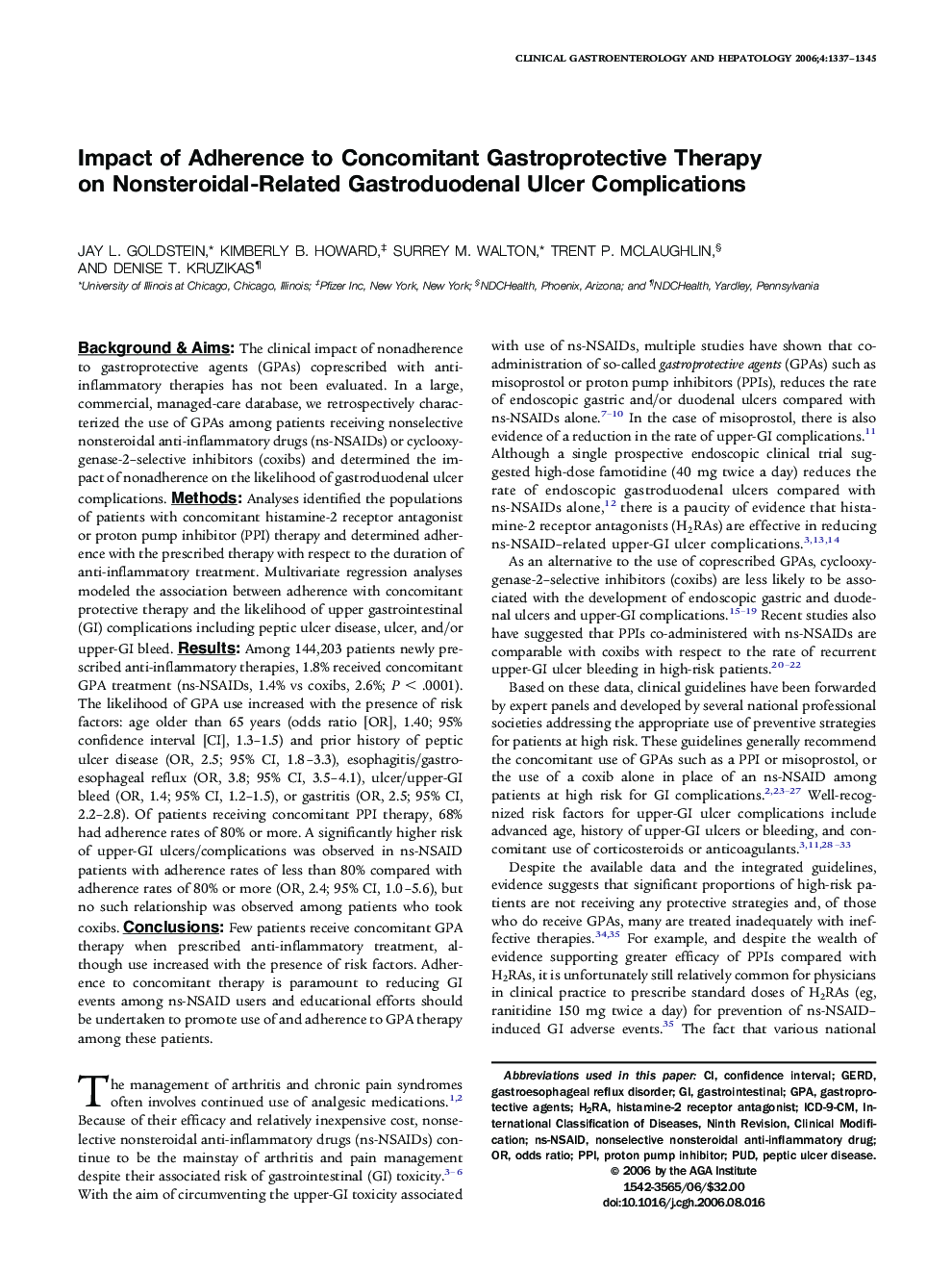| Article ID | Journal | Published Year | Pages | File Type |
|---|---|---|---|---|
| 3285726 | Clinical Gastroenterology and Hepatology | 2006 | 10 Pages |
Abstract
Background & Aims The clinical impact of nonadherence to gastroprotective agents (GPAs) coprescribed with anti-inflammatory therapies has not been evaluated. In a large, commercial, managed-care database, we retrospectively characterized the use of GPAs among patients receiving nonselective nonsteroidal anti-inflammatory drugs (ns-NSAIDs) or cyclooxygenase-2-selective inhibitors (coxibs) and determined the impact of nonadherence on the likelihood of gastroduodenal ulcer complications. Methods Analyses identified the populations of patients with concomitant histamine-2 receptor antagonist or proton pump inhibitor (PPI) therapy and determined adherence with the prescribed therapy with respect to the duration of anti-inflammatory treatment. Multivariate regression analyses modeled the association between adherence with concomitant protective therapy and the likelihood of upper gastrointestinal (GI) complications including peptic ulcer disease, ulcer, and/or upper-GI bleed. Results Among 144,203 patients newly prescribed anti-inflammatory therapies, 1.8% received concomitant GPA treatment (ns-NSAIDs, 1.4% vs coxibs, 2.6%; P < .0001). The likelihood of GPA use increased with the presence of risk factors: age older than 65 years (odds ratio [OR], 1.40; 95% confidence interval [CI], 1.3-1.5) and prior history of peptic ulcer disease (OR, 2.5; 95% CI, 1.8-3.3), esophagitis/gastroesophageal reflux (OR, 3.8; 95% CI, 3.5-4.1), ulcer/upper-GI bleed (OR, 1.4; 95% CI, 1.2-1.5), or gastritis (OR, 2.5; 95% CI, 2.2-2.8). Of patients receiving concomitant PPI therapy, 68% had adherence rates of 80% or more. A significantly higher risk of upper-GI ulcers/complications was observed in ns-NSAID patients with adherence rates of less than 80% compared with adherence rates of 80% or more (OR, 2.4; 95% CI, 1.0-5.6), but no such relationship was observed among patients who took coxibs. Conclusions Few patients receive concomitant GPA therapy when prescribed anti-inflammatory treatment, although use increased with the presence of risk factors. Adherence to concomitant therapy is paramount to reducing GI events among ns-NSAID users and educational efforts should be undertaken to promote use of and adherence to GPA therapy among these patients.
Keywords
Related Topics
Health Sciences
Medicine and Dentistry
Gastroenterology
Authors
Jay L. Goldstein, Kimberly B. Howard, Surrey M. Walton, Trent P. Mclaughlin, Denise T. Kruzikas,
